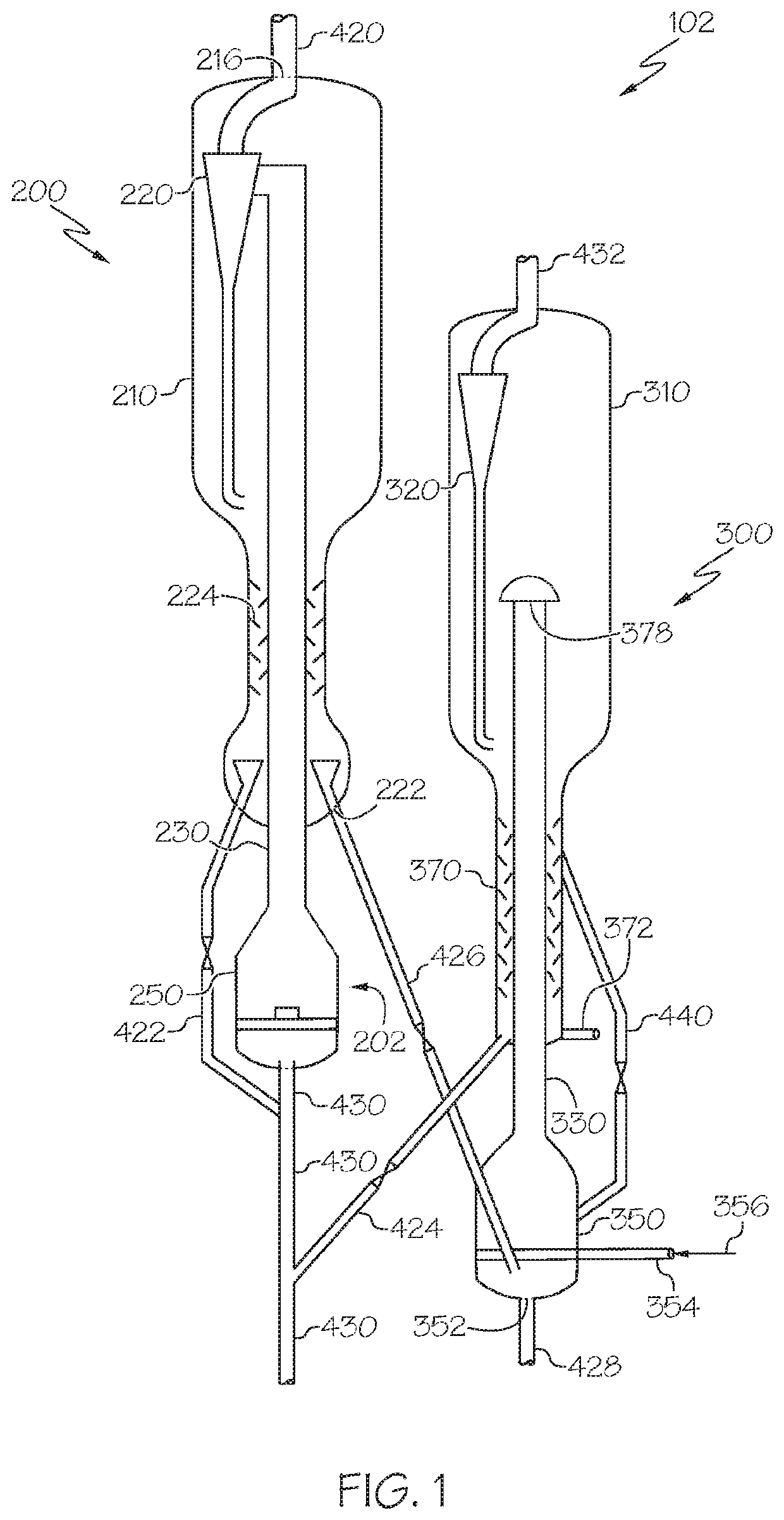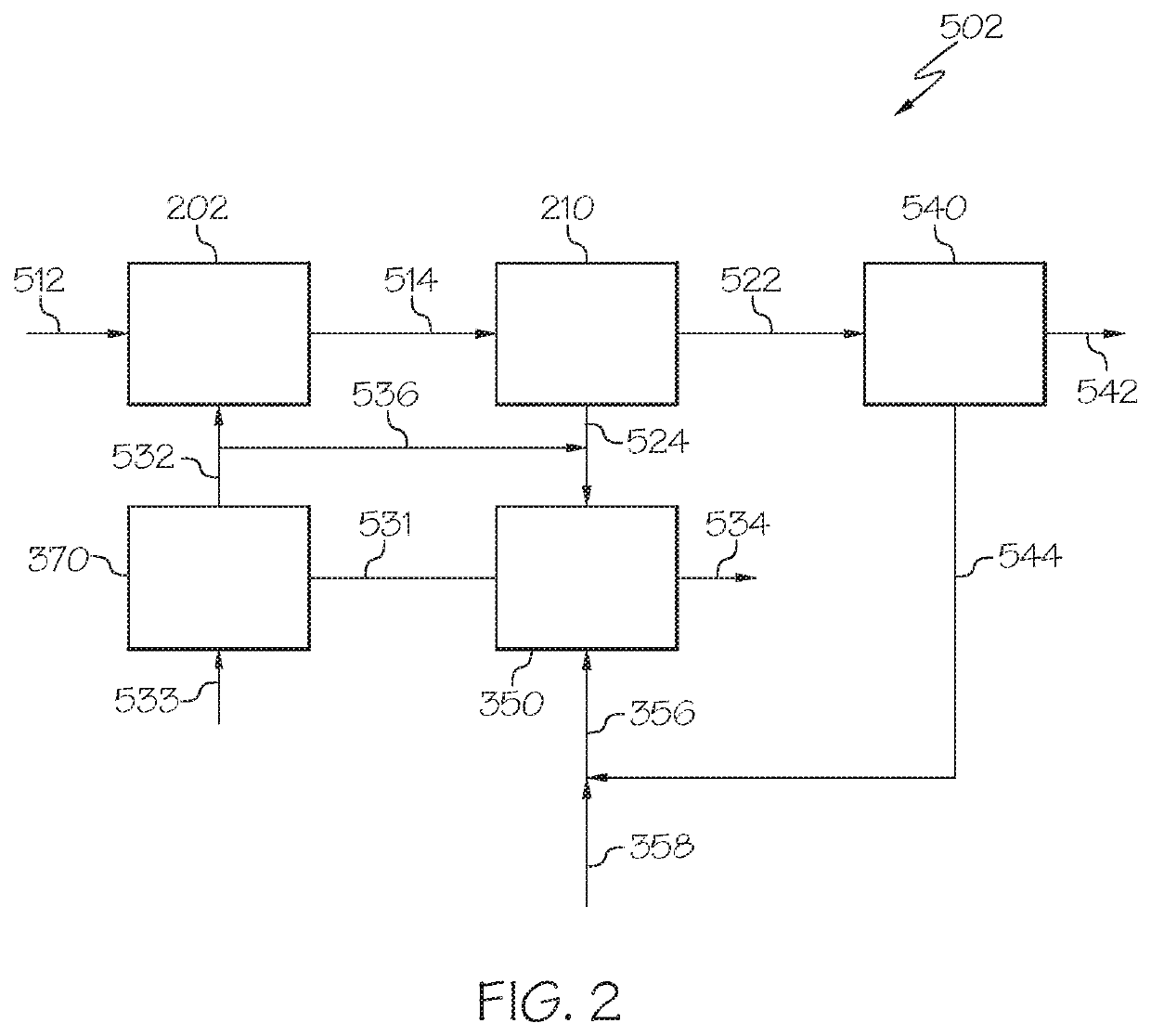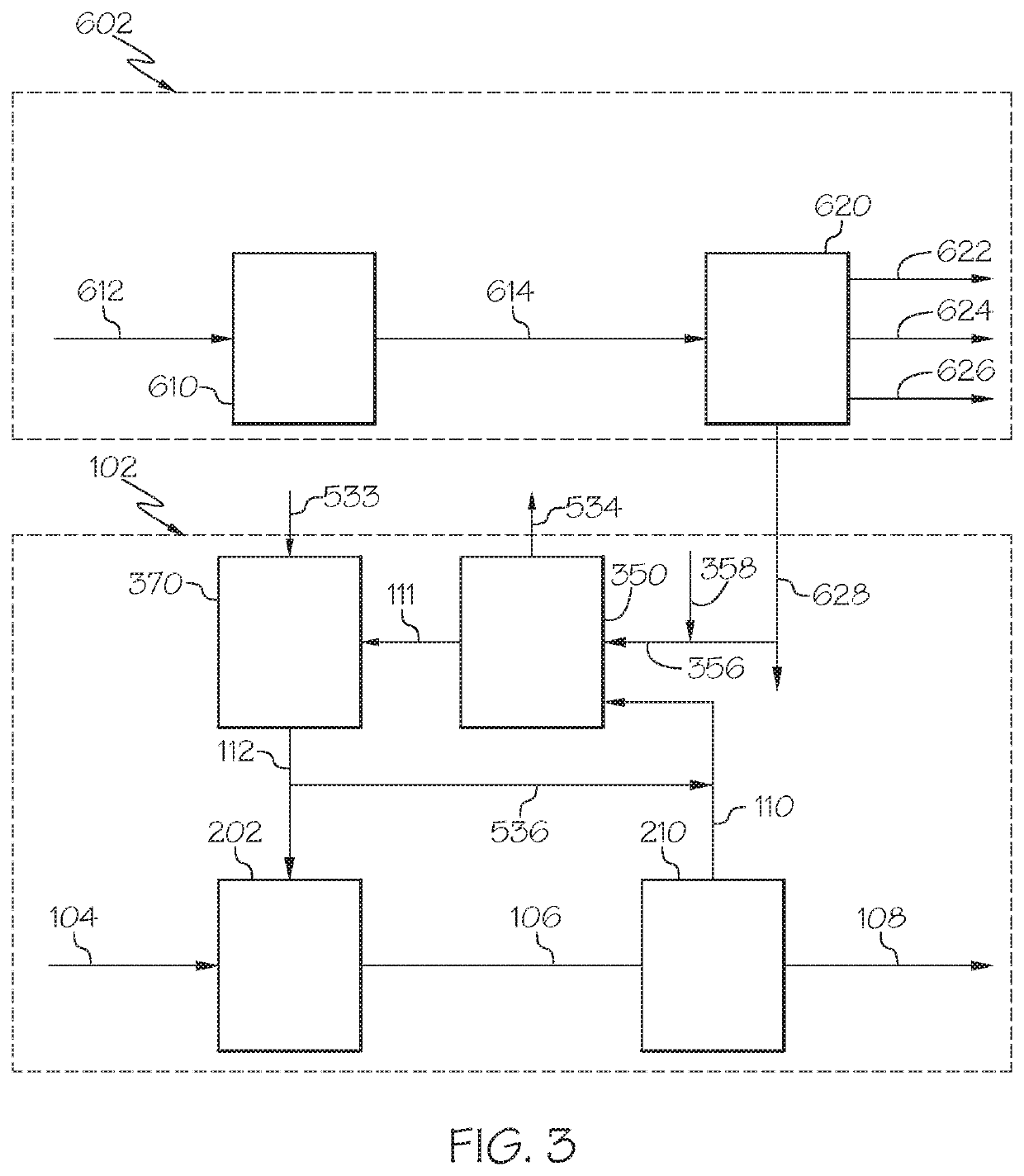Chemical processes and systems that include the combustion of supplemental fuels
a technology of supplemental fuels and chemical processes, applied in the field of chemical processing systems, can solve the problems of increasing the operating cost of the reactor system, reducing the activity of the catalyst, and not being able to propagate endothermic reactions, etc., and achieves the effect of increasing the conversion rate of the reactor, increasing the catalyst dehydrogenation activity, and high weight ratio
- Summary
- Abstract
- Description
- Claims
- Application Information
AI Technical Summary
Benefits of technology
Problems solved by technology
Method used
Image
Examples
example 1
Weight Ratio of Catalyst to Hydrocarbon on Conversion of Propane Dehydrogenation Reactions at Relatively Low Heat Input
[0074]In Example 1, the effects of increasing the weight ratio of catalyst to hydrocarbon in the combustor on the conversion of propane in a propane dehydrogenation reactor system were evaluated during operation of the reactor system at relatively low heat input. The propane dehydrogenation reactions were conducted using a Davidson Circulating Riser (DCR) pilot plant unit obtained from Grace Davidson and having an upflow fluidized reactor portion and a catalyst processing portion. The DCR unit was modified to allow in-situ fuel combustion in the catalyst processing portion. Each reaction run 1A-1D was conducted with 4100 grams of freshly loaded catalyst comprising platinum and gallium supported on a silica-containing alumina carrier. The inlet temperature to the riser reactor of the DCR unit was controlled at 630° C. and the pressure was set to 13 psig. The propane ...
example 2
Weight Ratio of Catalyst to Hydrocarbon on Conversion of Propane Dehydrogenation Reactions at Relatively High Heat Input
[0078]In Example 2, the effects of increasing the weight ratio of catalyst to hydrocarbon in the catalyst processing portion on the propane conversion of a propane dehydrogenation reactor system operating at relatively high heat input (i.e., 3 times the supplemental fuel flow rate of Example 1) were evaluated. The propane dehydrogenation reactions were conducted in the DCR unit described in Example 1. In Example 2, the catalyst processing was conducted at relatively high heat input which was accomplished by increasing the supplemental fuel stream flow rate to 3 times the supplemental fuel stream flow rate of Example 1. The propane dehydrogenation reactions were conducted at constant heat input of about 4,700 BTU / hour (4.7 KBTU / hr). All other operating parameters were the same. The propane dehydrogenation reactions were conducted using supplemental fuel streams comp...
PUM
| Property | Measurement | Unit |
|---|---|---|
| Fraction | aaaaa | aaaaa |
| Substance count | aaaaa | aaaaa |
| Time | aaaaa | aaaaa |
Abstract
Description
Claims
Application Information
 Login to View More
Login to View More - R&D
- Intellectual Property
- Life Sciences
- Materials
- Tech Scout
- Unparalleled Data Quality
- Higher Quality Content
- 60% Fewer Hallucinations
Browse by: Latest US Patents, China's latest patents, Technical Efficacy Thesaurus, Application Domain, Technology Topic, Popular Technical Reports.
© 2025 PatSnap. All rights reserved.Legal|Privacy policy|Modern Slavery Act Transparency Statement|Sitemap|About US| Contact US: help@patsnap.com



